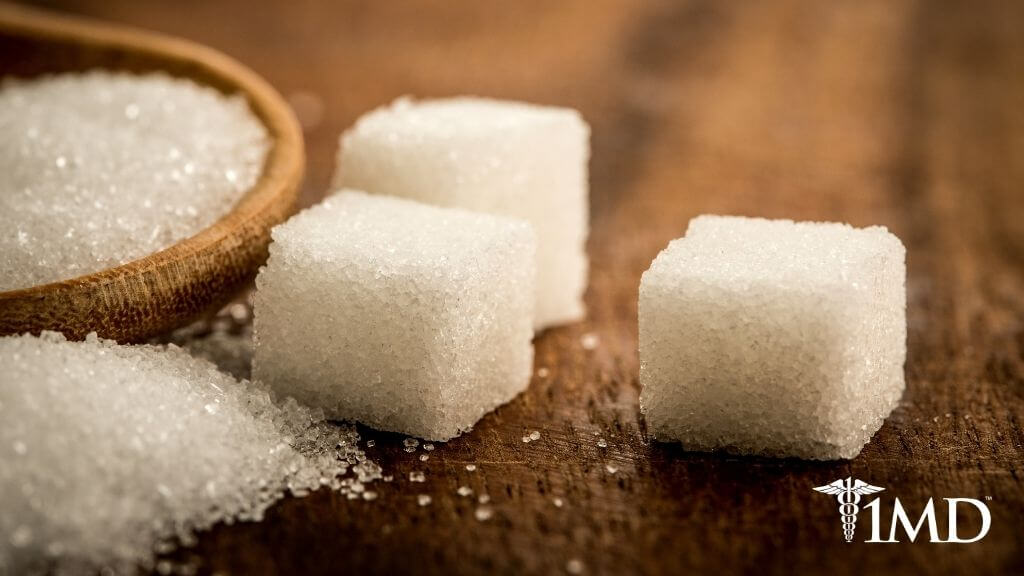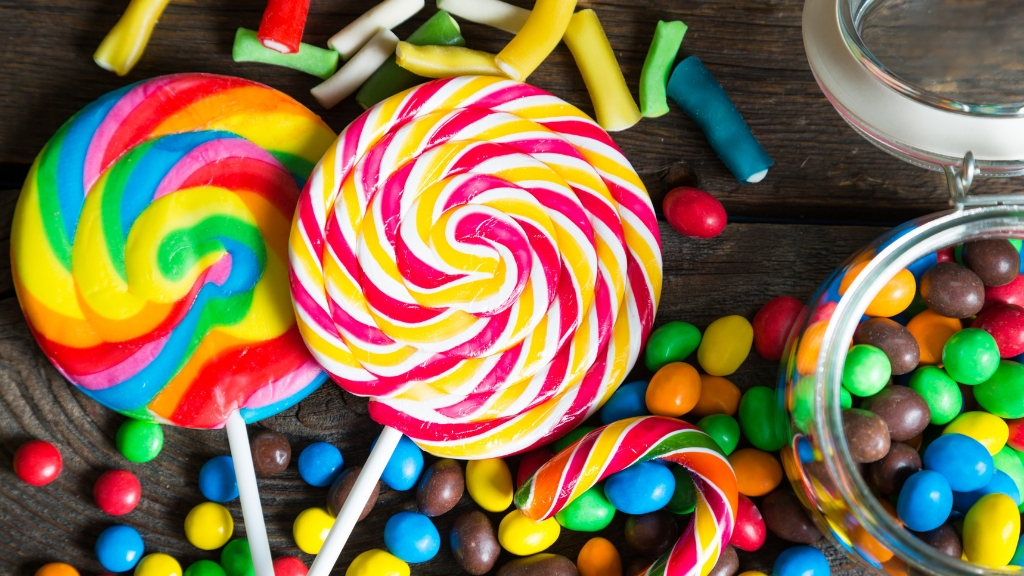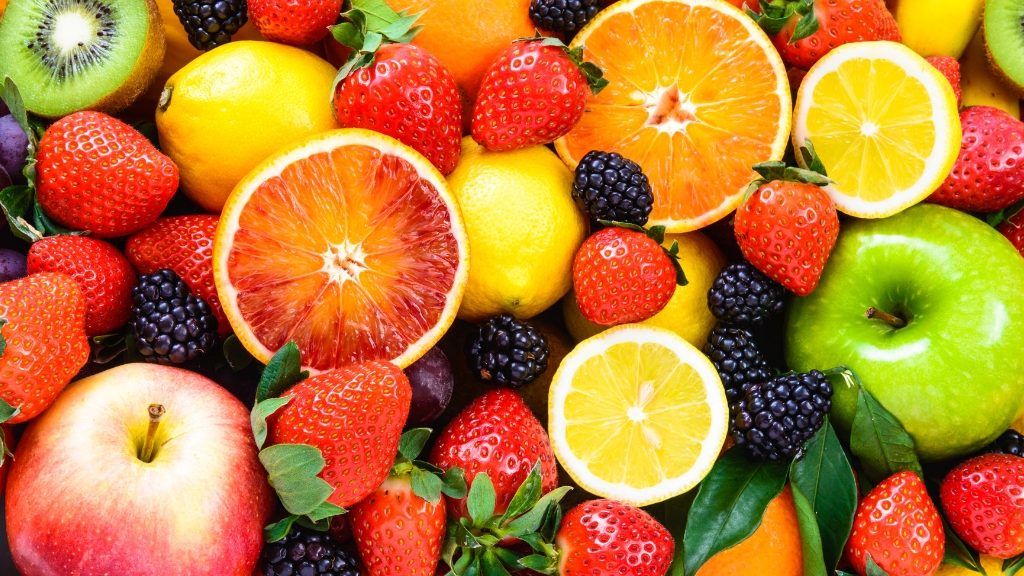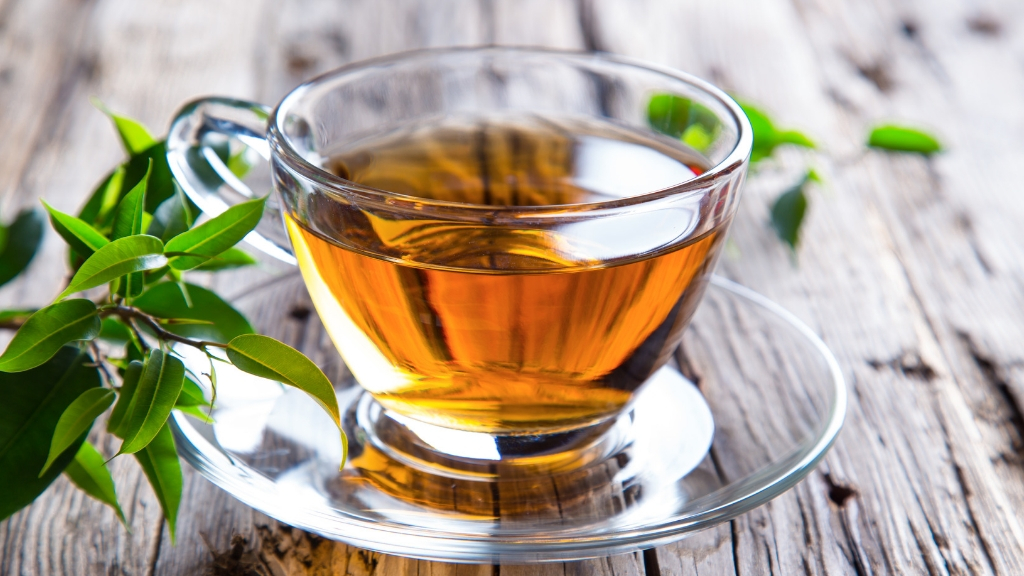Does Sugar Give You Diabetes? Fact vs. Fiction + Saying No to Cravings
8 minute read
Sugar brings to mind all the candy at movie theatres, during Halloween, and the lurking sweetener in many surprising foods. And, while going overboard on sugar is often thought to contribute to the debilitating disease, diabetes, it’s not the only factor in the glucose game.
Genetics, lifestyle, diet, exercise, stress, and sleep all play a pivotal role in the risk of developing diabetes, aside from the rare percentage of those born with the disease, widely-known as Type 1 diabetes. Here’s what you need to know to separate fact from fiction concerning sugar’s relationship with diabetes.
Diabetes Defined
According to the American Diabetes Association, diabetes is categorically defined as a group of metabolic diseases characterized by hyperglycemia. Diabetes occurs when the body fails to effectively regulate blood sugar levels, usually characterized by the pancreas not producing the hormone insulin, when cells becomes resistant to insulin, or both.
| Related: Can Vitamin D Reduce Diabetes Risk? |
Its long-term damage includes dysfunction of other organs, such as eyes, kidney, heart, blood vessels, liver, and nerves (neuropathy).
Diabetes Type 1
Type 1 diabetes accounts for roughly 5-10% of all diabetes cases, often encompassing that of insulin-dependent diabetes or juvenile-onset diabetes, and is the result of the destruction of the body’s B-cells. Type 1 diabetes is medically classified as an autoimmune disease.

Diabetes Type 2
Alternatively, type 2 diabetes accounts for 90-95% of diabetes cases, and is heavily diagnosed in obese or sedentary individuals. This type of the disease occurs when the pancreas stops producing enough insulin, or when the body’s cells no longer respond to insulin and acquire an immunity.
Type 1 diabetes is largely genetic and rare, whereas type 2 accounts for most diagnosed diabetic cases and is triggered by poor diet and lifestyle choices.
| Related: 5 Incredible Health Benefits of Turmeric for Diabetes |
The good news is that, with the adoption of proper, healthy eating and frequent exercising, type 2 can sometimes be reversed, or at the very least, controlled and managed. Markedly, diabetes occurs when the blood is consistently inundated with excessively high sugar levels.
The Case for Glucose: Natural Sugar vs. Added Sugar
So, you may have noticed there has been a lot of talk lately regarding the comparison of added sugars to that of natural sugars. In fact, nutrition labels are now listing percentages and grams of added sugars as a guide to help demystify the often perplexing conundrum.
| Related: Sugar 101: How Fructose, Glucose, & Sucrose Differ |

Sucrose, i.e., table sugar, is naturally derived from sugar beets or sugarcane. It is comprised of one molecule of glucose and one molecule of fructose, bonded as one.
When you consume sucrose, or “added” sugar (candy, cakes, sweetened beverages), the sucrose and glucose molecules are separated by the small intestine’s enzymes before being absorbed by the blood and carried into the liver.
Thus, blood sugar levels become raised, and the pancreas secretes insulin in response, where it will transport the glucose out of the bloodstream and into cells where it can eventually be metabolized for energy.
However, if it fails to get metabolized due to insufficient caloric burn, it will transform to fat. Hence, the increase of fatty liver, excess weight gain/obesity, and cardiovascular diseases.
While consuming exponential amounts of added sugar has been linked to developing diabetes, especially with the overzealous consumption of sweetened beverages, the consumption of “natural” sugars doesn’t have the same life-altering effects.
Natural sugars are those found in fresh fruits, vegetables, and most dairy/milk products and have not been added through common processing procedures. They exist within a hybrid of fiber, water, antioxidants, and other body-benefitting nutrients.

| Related: What the Sugar Industry Didn’t Want You to Know |
As a result, they are are easily digested and slowly absorbed, leaving one with a longer-lasting and satisfying sense of “fullness.”
Natural also helps eliminate the unwanted sugar spikes or crashes during that mid-afternoon slump. In fact, some studies have effectively demonstrated that consuming at least one piece of fresh fruit per day actually lowers your risk of developing diabetes by an impressive 7-13%.
As far as those popular, cold-pressed juice drinks making appearances on food blogs and social media feeds, the verdict is still out on whether their sugar content is diabetes-dangerous.
Natural sweeteners, such as agave, honey, and maple syrup are classified as “refined” sugar, and should be consumed sparingly.
Artificial sweeteners, on the other hand, are found to contribute to diabetes, even though they don’t necessarily spike blood sugar levels.
Here’s why—Although not yet conclusive, evidence has been shown that artificially-sweetened products actually increase cravings for sweet-tasting foods, leading to potentially high sugar consumption, which increases risk of type 2 diabetes.
The Lowdown on a Sticky Situation
Because the sugar spikes coming, the body stays in a perpetual state of craving, which inevitably leads to overeating and weight gain. The disruption of the hormone leptin, which promotes a feeling of fullness, leaves hunger signals invariably on, and this can cause the development of the disease.

So, stick with consuming natural sugars that come from dairy, veggies, and fresh fruit to satisfy an unrelenting sweet tooth. Other tips to keep sugar cravings in check are:
♦ Clock at least 7-9 hours of quality Z’s per night
♦ Get moderate to high-intensity exercise at least 5 days a week, but aim for 7
♦ Reduce stress by partaking in yoga, mindful meditation, reading, and other feel-good hobbies
♦ Skip the sugary drinks and opt for antioxidant-rich green tea, coffee, or water
♦ Stop smoking
♦ If you’re clinically obese, losing even 5-10% of your body weight can significantly reduce your risk of developing type 2 diabetes
♦ Limit alcohol consumption
The Bottom Line
Adapting a lifestyle of healthy, mindful eating low in added sugars, while keeping stress and smoking in check and getting plenty of exercise and sleep will surely lower your risk of developing diabetes.
As per the American Heart Association, limit daily intake of refined, added sugar to no more than 25 grams for women, and roughly 37 grams for men. Stock up on fresh fruits, dark, leafy greens, and whole grain foods to curb cravings.
While genetics do play an integral role in the risk of developing type 2 diabetes, you can control your health by implementing healthy, long-term lifestyle habits.












